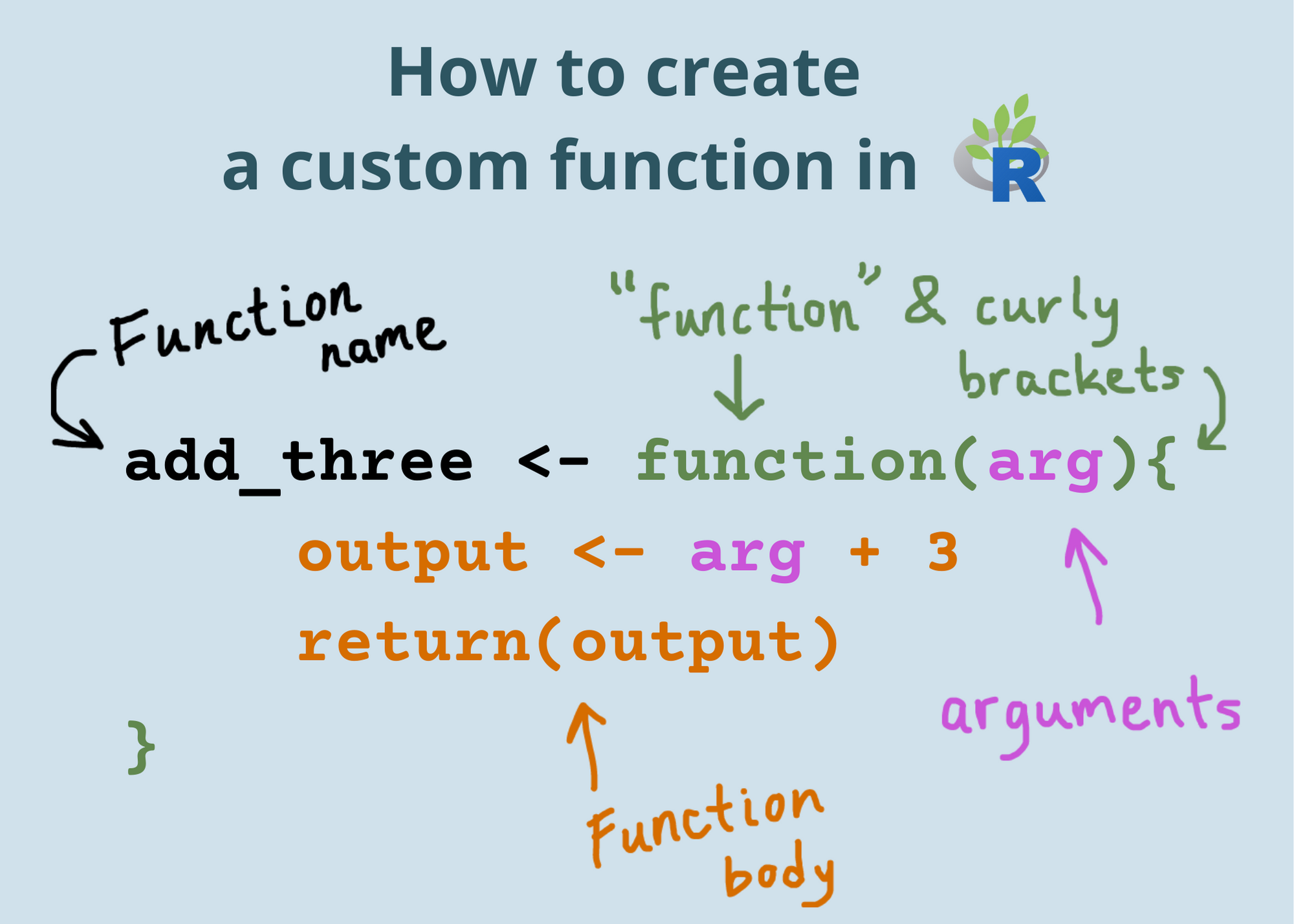Writing functions and pipelines
Session 7
2024-11-20
1 Functions

How to create a custom function in R
Source: How to create your own function in R (R for Ecology)
Why functions?
- Make your code easier to understand
- Update code in one place, instead of many
- Reduce chance of making copy and paste mistakes
- Reuse work from project-to-project
What is refactoring?
Refactoring is the process of making code:
- easier to understand
- cheaper to modify
…without changing behavior.
Source: Code Smells and Feels (2018)
Types of functions
- Vector functions take one or more vectors as input and return a vector as output.
- Data frame functions take a data frame as input and return a data frame as output.
- Plot functions that take a data frame as input and return a plot as output.
Writing a function
- Look for repeated sections of code.
- What parts are constant?
- What parts vary?
Writing a function
To turn code into a function you need three things:
- A name.
- The arguments.
- The body.
Writing a function
To turn code into a function you need three things:
Writing a function
Adapted from the tidyverse style guide:
- Naming functions
- Formatting functions
- Using
return() - Using comments
Naming functions
Strive to use verbs for function names:
Error in add_row(): argument ".data" is missing, with no defaultError in permute(): could not find function "permute"Error in row_adder(): could not find function "row_adder"Error in permutation(): could not find function "permutation"Source: Functions from The tidyverse style guide.
Using return()
Only use return() for early returns.
Use early returns to avoid else and “nested” logic.
Source: Functions from The tidyverse style guide.
Using comments
Use comments to explain the “why” not the “what” or “how”.
Source: Functions from The tidyverse style guide.
Types of vector functions
- “mutate” functions: functions that work well inside of
mutate()andfilter()because they return an output of the same length as the input. - summary functions: functions that return a single value for use in
summarize().
Example of vector functions
If a function is type-stable it satisfies two conditions:
You can predict the output type based only on the input types (not their values).
If the function uses …, the order of arguments in does not affect the output type.
Source: Type-stability from The tidyverse style guide.
Designing a “tidy” function
Four guiding principles for the “tidyverse”:
- human centered
- consistent
- composable
- inclusive
From Unifying principles in Tidy design principles (WIP)
2 Pipelines
